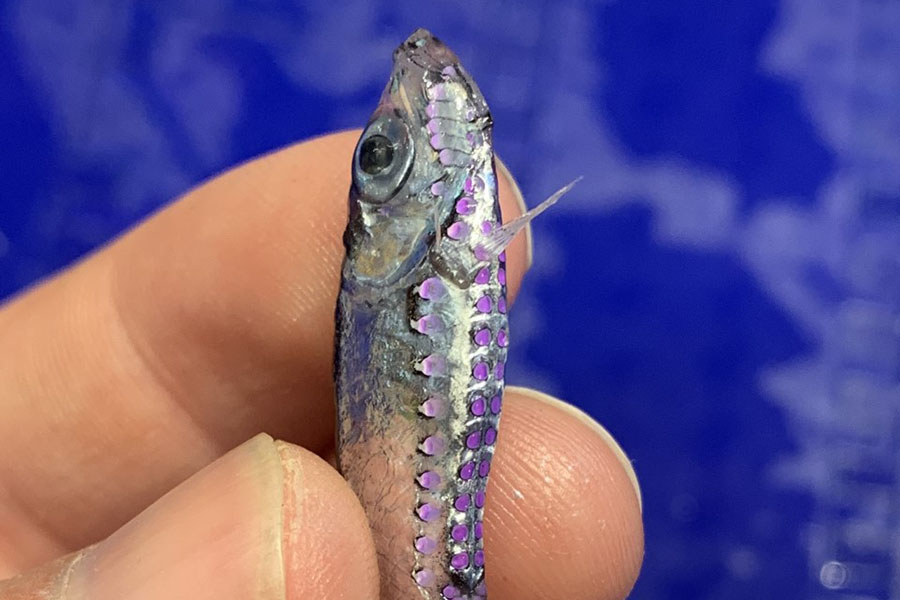Principal Investigator: Dr Clive Trueman University of Southampton
Summary
The aim of this project is to study one of the least understood components of the biological carbon pump: the role that vertically migrating fishes play in transporting carbon into the deep ocean.

We will do this by applying a new tool to generate the first measurements of field respiration rates of mesopelagic fishes. We will look at fish from tropical, sub-tropical and cool temperature areas to be sure that our results can be applied across the whole Atlantic Ocean.
We will measure how much carbon mesopelagic fish of different body sizes respire, and how sensitive this is to the temperature of the water they inhabit. Using these data we will liaise with other teams measuring the global abundance and body size distribution of mesopelagic fishes to refine estimates of the total amount of carbon respired by mesopelagic fishes.
Impact
The outcomes of this project will allow ocean biogeochemical modellers to better assess the relative importance of fish compared to other components of the biological carbon pump.
This work will therefore help us to better predict how the biological carbon pump will respond to future climate change.
Key academic beneficiaries of these outcomes include Ocean biogeochemists, ocean ecosystem modellers, zooplankton physiologists, fish ecologists and Biomineral chemists.
Background
The oceans naturally remove huge amounts of carbon from the atmosphere, protecting us from some of the negative effects of human carbon emissions. However, our understanding of exactly how this carbon capture and storage system works is incomplete. To avoid being returned to the atmosphere, carbon must be exported to the deep ocean. Biology plays a major role in exporting carbon, but the so called 'biological carbon pump' is in fact a very complicated set of interacting processes each of which is incompletely understood. As atmospheric carbon concentrations increase and the global ocean warms, processes controlling the biological carbon pump may change, making it even harder to predict medium to long term climate futures.
A huge volume of small fishes lives in the middle depths of the world's ocean. These 'mesopelagic' fishes rise to surface waters in the night, consuming carbon, then swim back to deep water during the day where some of this carbon is respired and returned to the water.
Mesopelagic fishes are the most abundant vertebrates on the planet and it is estimated that they are responsible for as much active movement of carbon as all zooplankton - but these fishes are very poorly known and are not included in most carbon cycle models.
To understand how much carbon fish can move, we need to know how much carbon each fish respires, and how this changes as temperature changes. These measurements have not been possible before, but our team has developed a new way to estimate respiration rates of fishes from the chemical composition of ear stones.